Fiona Brown led a walk round Ewelme, starting from the car park of the Shepherd’s Hut pub, on Wednesday 14 December. It was the fourth day in a row with the temperature failing to rise above freezing and the vegetation around Reading had been covered with a thick coating of rime. Approaching Ewelme in bright sunshine, it became clear that the even thicker coating of white on the surrounding fields was snow. The temperature dropped to -5C. Fiona explained that the underlying geology was Chalk above Gault Clay, but much of the village was built on tongues of surface Gravel. Springs rising around the village feed into the Ewelme Brook, which joins the Thames near Benson. The pub used to be a private house with an orchard where drovers could pen their sheep before taking them to the market at Wallingford. The walk started up High Street alongside the watercress beds. The water around the watercress plants was beginning to freeze over, but the stream continued to flow freely. Above the watercress beds, the stream flowed between the road and a wall. A dense layer of liverworts covered the wall just above the water line, Hart’s-tongue Fern was growing higher up and the green leaves of one of the Water-crowfoots could be seen in the crystal clear water. A dead Grey Wagtail lay face down in the stream. First stop was King’s Pool, where the water from various springs collects before feeding through to the watercress beds. It was occupied by a large flock of Mallards and a single Coot. Fiona informed the group that the king in question was Henry VIII, who was reputed to have swum here. Turning left into Parson’s Lane, the group stopped to admire an ornamental crab-apple tree which was covered with bright red cherry-like fruits, before walking up to the parish church.
In 1437, Alice de la Pole and her husband William, the first Duke of Suffolk, established and endowed a school and cloistered almshouses which are still in use today. Alice was the granddaughter of Geoffrey Chaucer and the daughter of Thomas Chaucer, the Governor of Wallingford Castle and Speaker of the House of Commons. Alice is buried in the church, where her impressive alabaster tomb can be seen. The church has many outstanding features, including the roof, various brasses and the carved wooden font cover. The almshouses have some of the oldest brickwork in Oxfordshire, made with small, thin bricks, sometimes laid horizontally and sometimes in a herring-bone pattern. The school now houses the village primary school. In the churchyard are the graves of Jerome K Jerome and several members of his family.
After standing around in the cold to look at the church and almshouses, a brisk walk was welcome. The route led to the edge of the village and then eastwards along the Chiltern Way. Animal tracks crossed the path. These were mostly Rabbit but at one point a clear set of Badger prints emerged from a gap in the hedge. The sunshine was gradually becoming hazier. There followed a short stretch of road, made somewhat treacherous by ice and packed snow. Turning left onto a footpath, a mixed flock of Redwings and Fieldfares flew down to the stubble field on the right. The hedges had been flailed, but a few berries remained, including privet and rose. The next footpath ran north-westwards with hedges on both sides. A hedgerow tree was identified as a Walnut, distinguished by its pale bark with vertical markings, big pinnate leaves, chunky twigs and the distinctive smell of its crushed fallen leaves. On an exploratory walk back in October, Fiona had found the characteristic leaf blisters of the Walnut Leaf Gall Mite Aceria erinea. Now, amongst the fallen leaves, she managed to find a damaged leaf which showed signs of an exited gall. Flocks of thrushes and smaller birds, including at least one Goldfinch, moved through the hedgerow ahead. Pigs in a nearby field had attracted a large flock of Lesser Black-backed Gulls and another flock of crows. A Pied Wagtail foraged on the mud in a gateway. Continuing across a lane and along the next footpath, an unusual tree was noticed. At its base, two different apple trees appeared to have fused together. One was an ornamental crab apple with small red fruits which were being eaten by a solitary Fieldfare. The other was an ordinary eating apple tree. Approaching the next lane, a Grey Squirrel was sitting on the top of the first of a line of telegraph poles and a Red Kite perched at the top of the second. The sun was now completely obscured by clouds. The lane led back to the pub, where there was a welcoming fire and lunch awaited.
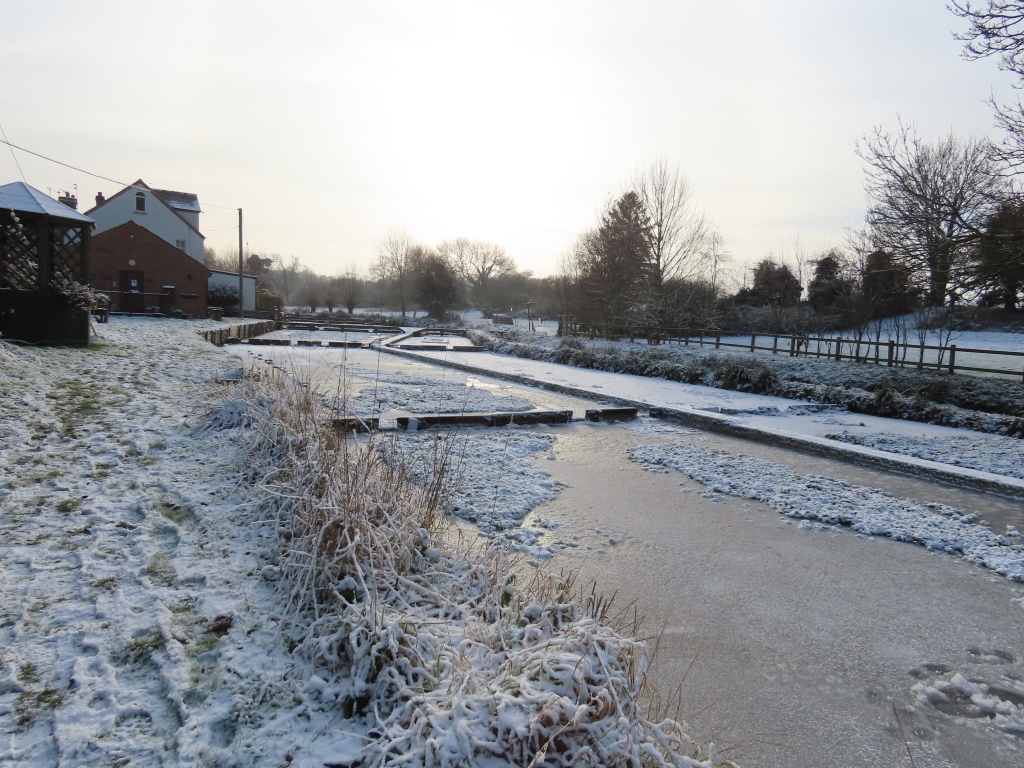
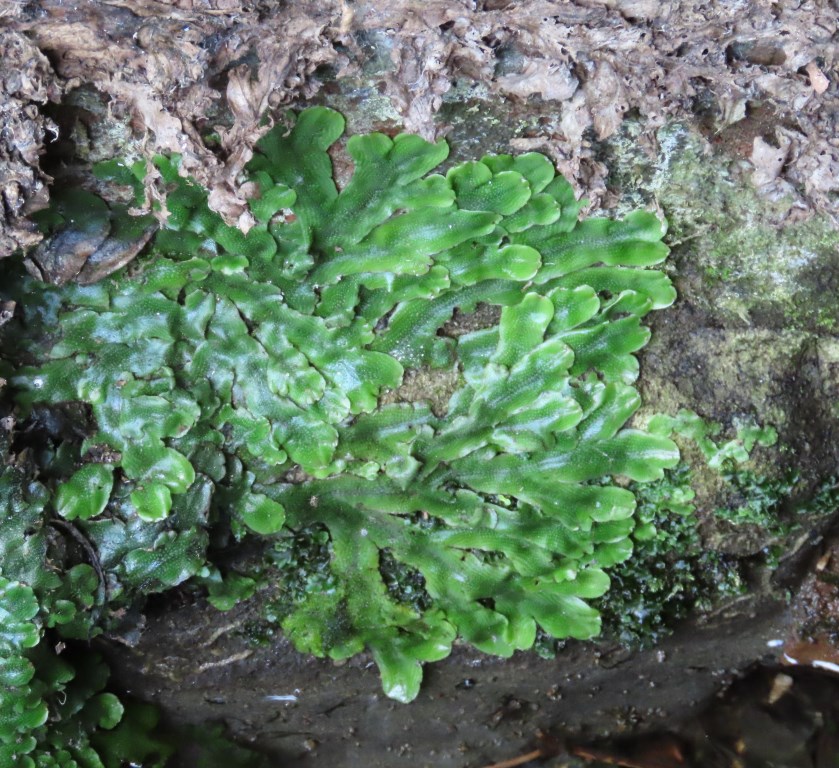
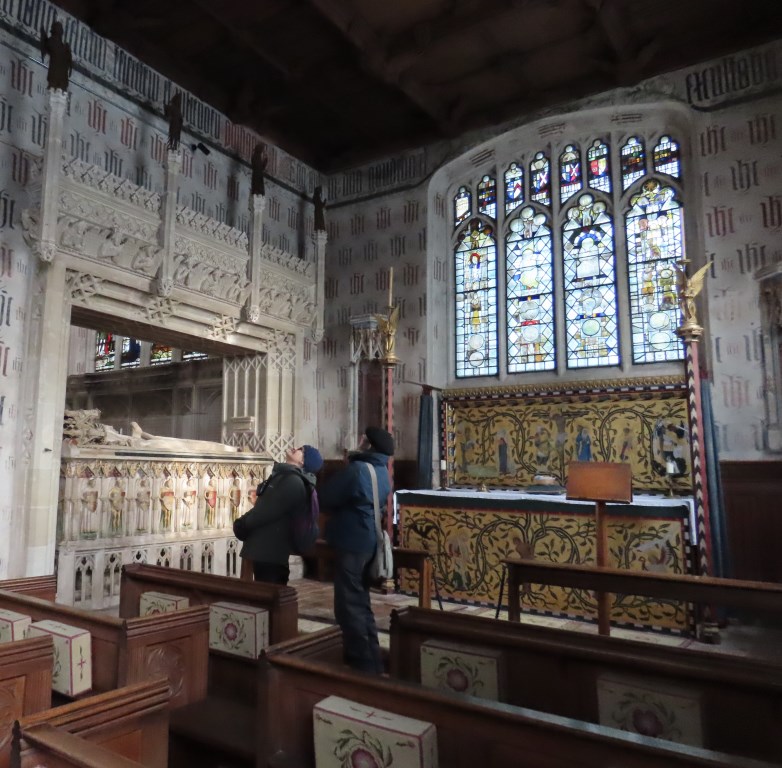
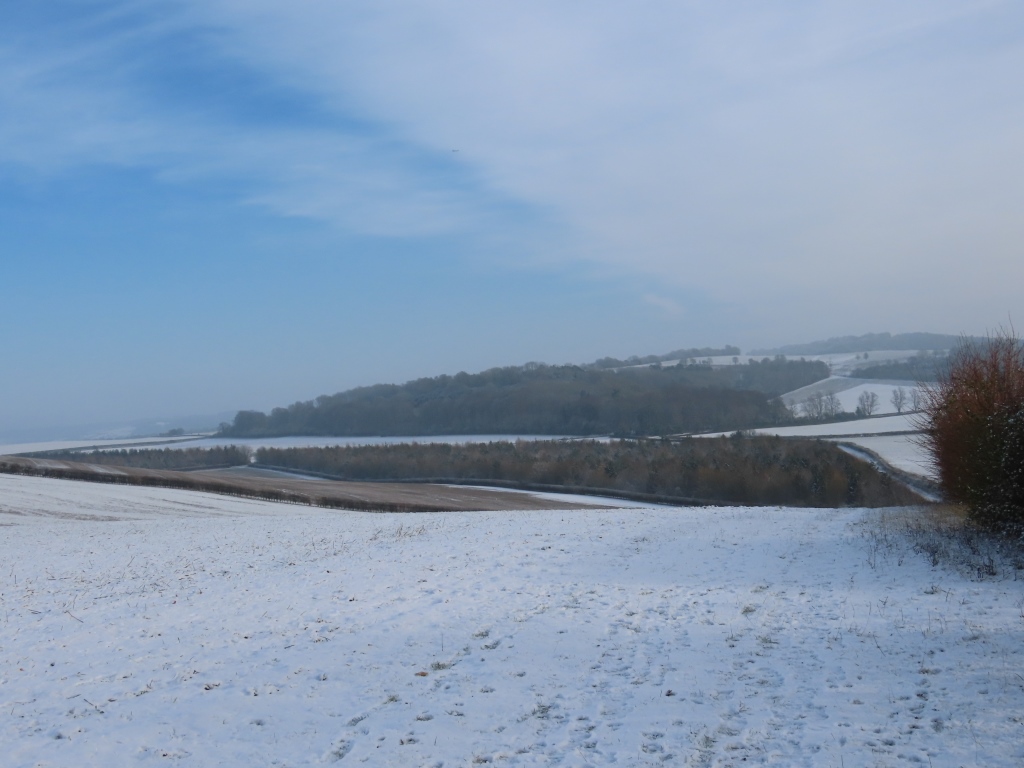
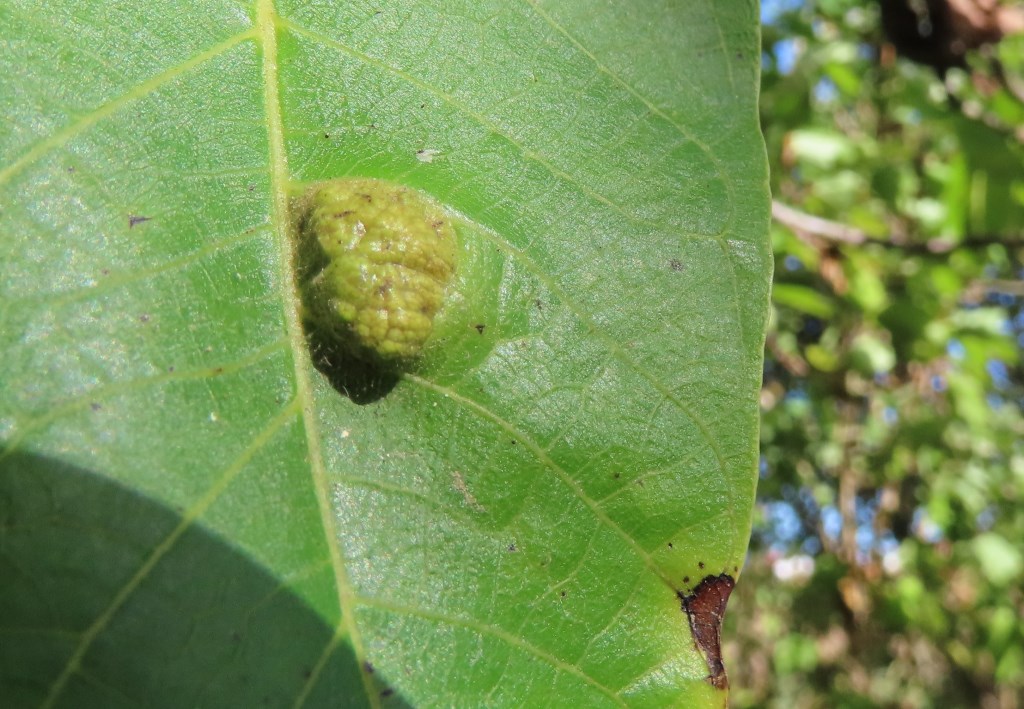

Pictures by Fiona Brown
